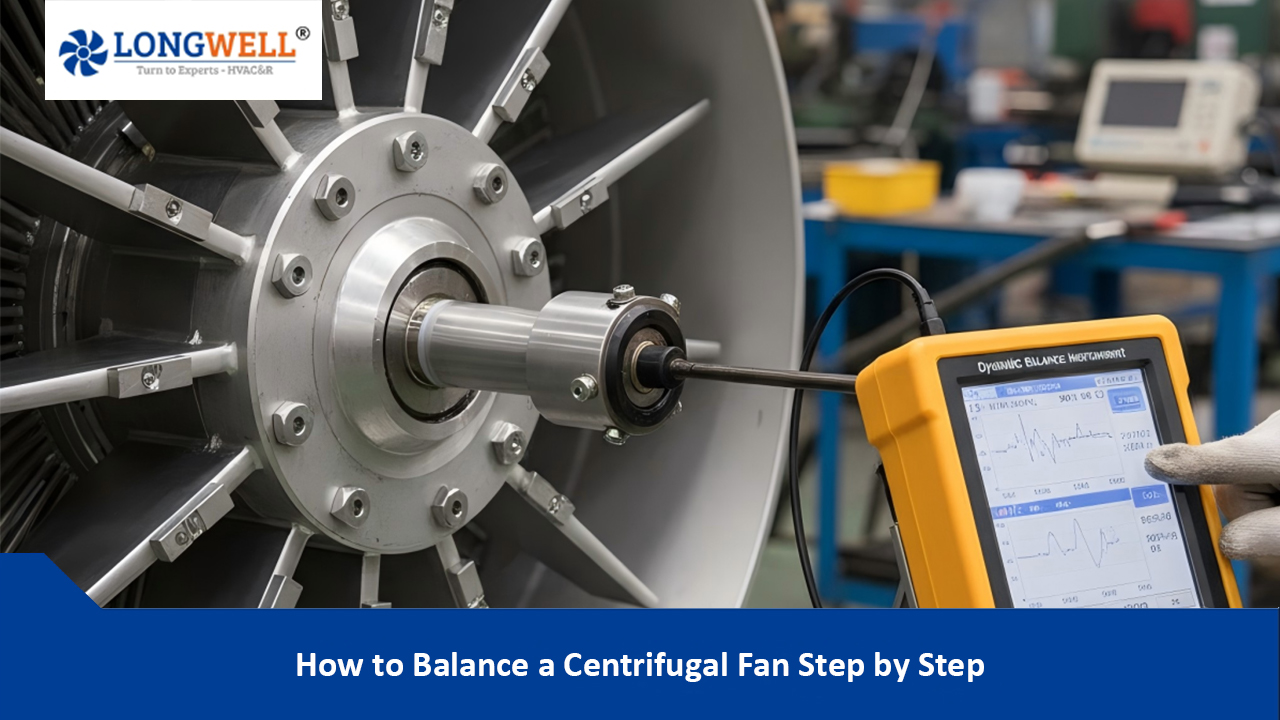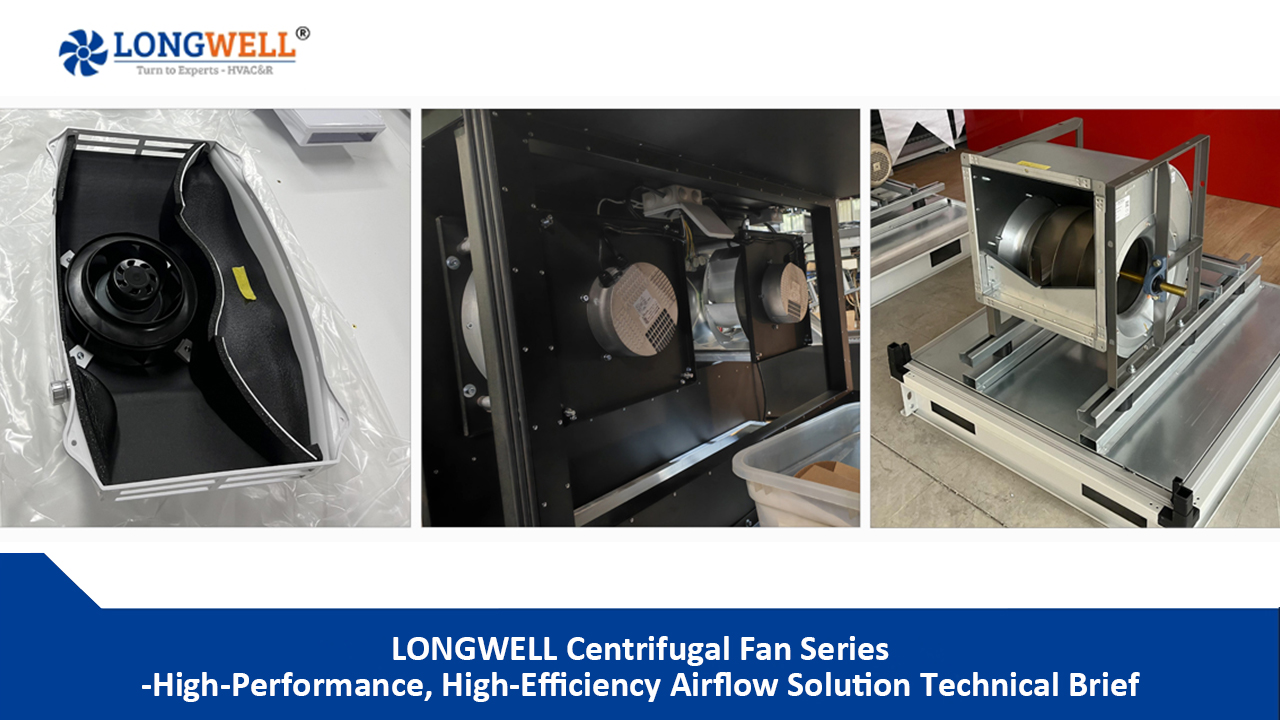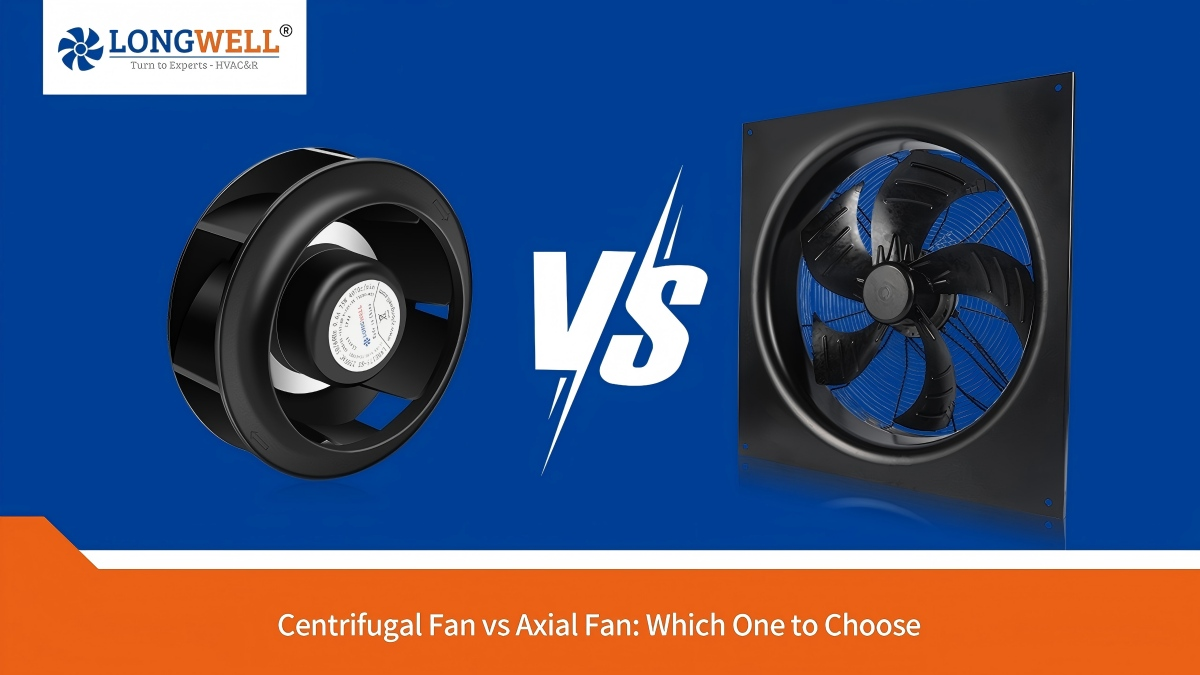Introduction
In many areas, good air quality and temperature control really matter. This is why different kinds of fans are important for facilitating air movement and moving air. They help move air in effective ways for many uses. Two types of fans that are common are EC fans and centrifugal fans. Each type has its own benefits for energy efficiency. EC fans are known for being very efficient and have precise control. Centrifugal fans are strong and perform well in tough conditions. This blog post will closely examine both types of fans. This will help you choose the right one based on your needs.
Exploring EC Fans
EC fans, or electronically commutated fans, are getting popular in recent years due to their wide range of applications. They save energy and let you control them precisely. This makes them a good choice for several uses, like refrigeration units. With their unique design and advanced technology, EC fans provide optimal performance while keeping energy consumption low. Let’s explore more about EC fans and see how they work to better understand their operations.
Definition and How EC Fans Work
An EC fan works with a special motor called an electronically commutated (EC) motor. This type of motor is also known as a brushless direct current (DC) motor. It uses permanent magnets to generate a magnetic field. Because of this, it doesn’t require a separate variable frequency drive. Unlike normal AC motors, it doesn’t need brushes or commutators.
The EC motor controls speed using electronics. This lets the fan provide the required airflow easily. You can change the DC voltage to adjust the fan’s speed and airflow very precisely. This precise control allows EC fans to work well, leading to significant energy savings.
Advantages of EC Fans in Modern Applications
EC fans have many benefits that suit our needs now. They run very well and use less energy. The motors in EC fans are electronically controlled, contributing to their longer lifespan and making them more efficient than traditional AC fans.
EC fans are very quiet. This is important in places such as offices, hospitals, and homes where noise can be a problem. They run quietly because they do not have brushes. Their precise speed control also helps to reduce vibrations.
Being able to carefully control the fan’s speed is important for getting good performance in different situations. This is especially true for temperature control. If you need to manage airflow when there are more people nearby or keep a certain temperature in important areas, EC fans provide steady, reliable results with low noise levels.
Unpacking Centrifugal Fans
Centrifugal fans are strong and can handle high pressure. They are important in many industries. Unlike axial fans, which blow air straight, centrifugal fans work with a spinning piece called an impeller. This impeller moves air out to the sides, making a lot of pressure in the airflow. Because of this, they are great at moving large volumes of air, even when there is some resistance.
Understanding Centrifugal Fans and Their Operation
A centrifugal fan has a rotating part called an impeller. It is located inside a scroll-shaped case. When the impeller spins, it pulls air into the center of the fan and pushes it outwards. The blades of the impeller are often curved. This shape increases the air’s energy, helping it move faster and increasing its pressure.
The way the fan’s cover and blades are designed affects how much air and pressure it can create. Blades that lean backward are very effective for this. On the other hand, blades that curve forward are great for moving large volumes of air.
Centrifugal fans are good at creating high static pressure. This makes them perfect for systems that use ductwork and air handling units in various industries. They work well in industrial processes too, where air needs to pass through filters or push against other resistances.
The Role of Centrifugal Fans in Industrial Settings
In factories, different activities can produce heat, dust, or fumes. That’s why centrifugal fans are essential. They help make the workplace safe and healthy. These fans can move large volumes of air. This ability makes them perfect for ventilation systems that remove pollution and control the temperature.
Centrifugal fans are commonly used in air handling units (AHUs) for commercial buildings. These units help control and move air in big buildings and factories. The fans in AHUs provide a constant flow of fresh, clean air. This helps create a comfortable and effective working environment.
Centrifugal fans are very strong. They work well in harsh environments. This makes them great for tough jobs like collecting dust, moving materials, and running in industrial ovens. They can keep running with reliable performance in tough conditions. This allows for continuous operation and better control of processes.
Comparative Analysis: EC Fans versus Centrifugal Fans
EC fans and centrifugal fans are both used to move air. However, they are designed differently. They have different levels of efficiency, control, noise, and maintenance requirements. Understanding these differences is important for choosing the right fan for your needs. Let’s look at these key points more closely.
Efficiency and Energy Consumption
EC fans are usually considered better than centrifugal fans when it comes to energy efficiency. Centrifugal fans usually have lower efficiency. Let’s explore the reasons why this is the case.
- EC Fans: EC motors have a brushless design and use electronic commutation. This design cuts down on energy losses from friction and heat. As a result, they are very energy efficient, especially when running at lower speeds.
- Centrifugal Fans: Regular centrifugal fans usually work with AC motors. They can lose energy because of problems like inefficient plug fan belt drives and not having precise speed control.
Comparison of Efficiency and Energy Savings:
| Feature | EC Fans | Centrifugal Fans |
|---|---|---|
| Efficiency | High efficiency (up to 90%) | Moderate efficiency (up to 75%) |
| Energy Consumption | Lower energy consumption | Higher energy consumption |
| Energy Savings | Significant energy savings potential | Limited energy savings potential |
EC fans are an excellent option for projects that value energy efficiency. They help save energy in several ways.
Noise Levels and Control Capabilities
EC fans are loved for being quiet. This makes them perfect for places where sound is important. Let’s see how the noise levels and controls of various fans stack up against each other.
- EC Fans: These fans use brushless DC motors. They let you control the speed precisely while keeping noise low and achieving low energy consumption. You can adjust the fan speed easily with variable speed control. This matches your airflow needs and makes the fans quieter.
- Centrifugal Fans: These fans can be loud, especially at high speeds. Silencers may help lower the noise, but they are still not as quiet as EC fans.
The precise speed control in EC fans makes it easier to feel comfortable. It helps in managing the environment better in HVAC systems.
Design and Maintenance Considerations
EC fans are simpler to take care of than centrifugal fans. This is due to their easy design. They also do not need brushes.
- EC Fans: EC motors are brushless. This means you do not have to change brushes often like in traditional DC motors. They also have fewer parts that need care.
- Centrifugal Fans: Centrifugal fans, especially those with belts, need regular care. You have to check the belt tension, apply lubrication, and sometimes replace the belts. These maintenance tasks can lead to downtime and increase maintenance costs over time.
EC fans may seem pricey at first. But they need less care and last longer. This can lead to lower total costs for having them over the years.
Real-World Applications and Case Studies
EC fans and centrifugal fans play a key role in several areas. Knowing their strengths in different situations can help you choose the right one. Let’s explore some examples to understand how they are commonly used.
EC Fans in HVAC Systems and Data Centers
EC fans are becoming a popular choice for HVAC systems in telecommunications equipment. Many buildings use them to save energy. These fans have precise speed control and work efficiently. This means they consume less energy. They also help improve airflow while keeping the right temperature and humidity levels.
Data centers produce a lot of heat and must always be on. EC fans are great for this because they run quietly. This is important in places where noise matters. They provide steady airflow, which helps to keep servers and other important equipment cool and reliable.
Using EC fans in HVAC systems and data centers is a great way to improve energy efficiency. This choice saves energy and keeps everything running smoothly.
Centrifugal Fans in Ventilation and Dust Collection
Centrifugal fans are great at moving large volumes of air. They can work well, even with some resistance. This makes them vital for industrial ventilation and dust collection systems.
- Industrial Ventilation: Factories and manufacturing plants use centrifugal fans to keep the air clean. These fans remove dust, fumes, and heat quickly. This helps make a safe workplace.
- Dust Collection: Dust collection systems often use centrifugal fans because they handle high static pressure well. These fans capture and get rid of airborne particles effectively. This is very important in industries such as woodworking, metalworking, and pharmaceuticals.
Centrifugal fans are powerful and can work well in tough conditions. This quality makes them a great option for important industrial jobs in harsh environments.
Conclusion
In conclusion, it’s important to know the differences between EC fans and centrifugal fans. Understanding this comprehensive comparison will help you make better choices for different activities. EC fans are efficient in energy use and are often used in modern systems like HVAC. In contrast, centrifugal fans are important for industrial ventilation. When deciding between these two types, consider energy consumption, noise levels, and maintenance requirements. You can see from real-life examples how both fans work well in different cases. By looking at your own needs, you can find the right fan that fits your requirements. If you need more help picking the right fan for your situation, feel free to ask for expert guidance.
Frequently Asked Questions
What makes EC fans more energy-efficient than centrifugal fans?
EC fans use EC technology. This technology runs the motor with permanent magnets and electronic commutation. This makes it more efficient and reduces energy lost as heat. It is different from regular AC motors often used in centrifugal fans.
Can EC fans be used in all the applications where centrifugal fans are used?
EC fans have many benefits. However, they may not be as good as centrifugal fans. Centrifugal fans work well when there is high static pressure. They are great for cases that require very high airflow rates. But this doesn’t always fit the needs of every EC fan.
How do noise levels of EC fans compare to those of centrifugal fans?
EC fans usually make less noise than centrifugal fans. This is because EC motors do not have brushes. This brushless design reduces vibrations and allows for quiet operation.
What are the maintenance requirements for EC fans vs. centrifugal fans?
EC fans usually need less frequent maintenance than centrifugal fans. This is because EC motors don’t use brushes, so you don’t need to change them often. Still, it’s important to check and clean both types of fans every now and then.
Are there cost benefits to choosing EC fans over centrifugal fans in the long term?
EC fans might be more expensive to buy initially due to their higher upfront cost. However, they can save you money over time. They use less energy and require less maintenance. These advantages can reduce the overall cost of owning the fan throughout its life.


